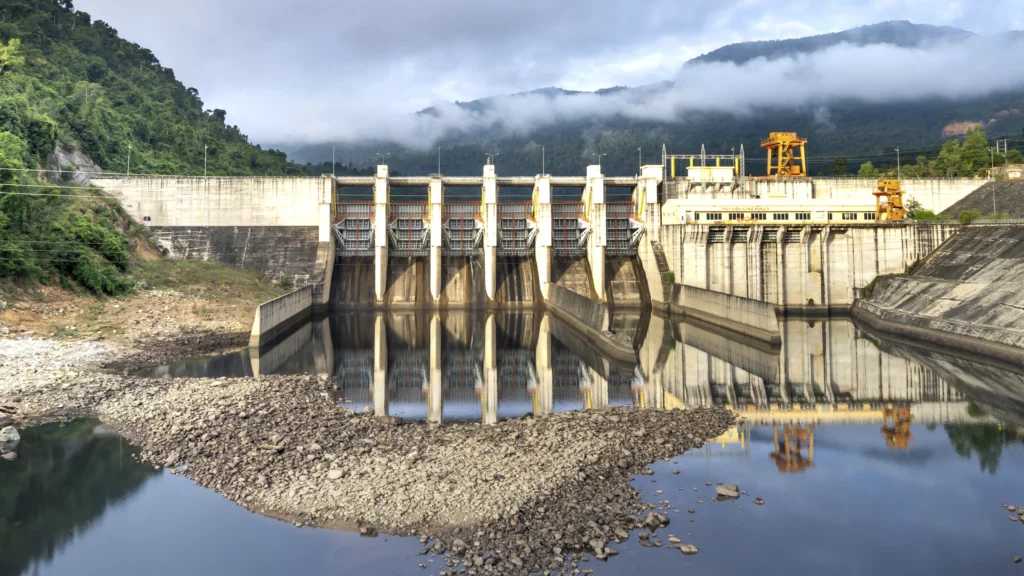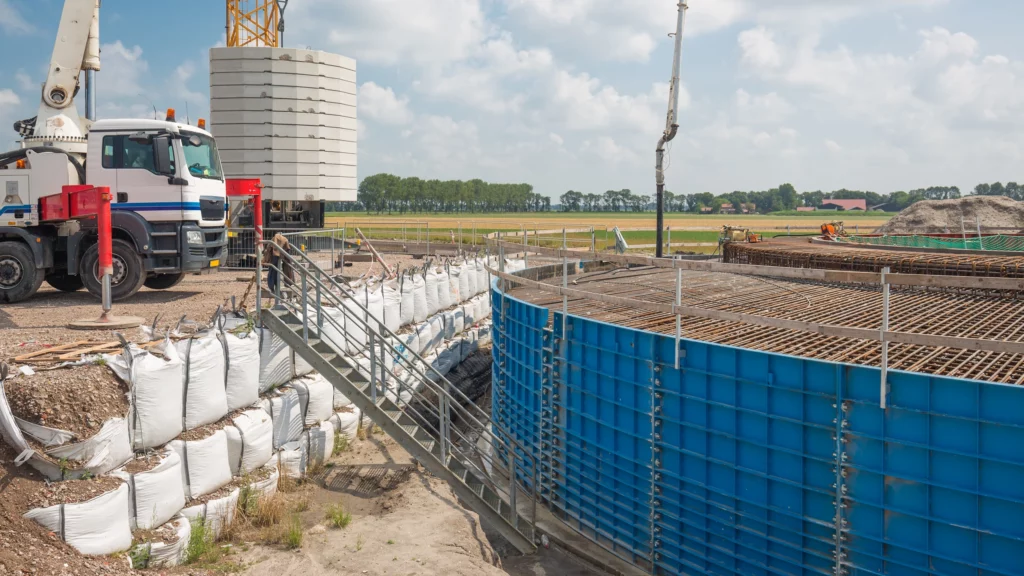Environmental & Energy
Concrete solutions designed for sustainability and energy-sector projects, providing the necessary support for renewable energy and environmental infrastructure.
ENVIRONMENTAL & ENERGY SERVICES

Hydroelectric Infrastructure
Engineered concrete bases that provide stability and support for wind energy installations, designed to withstand high loads and environmental conditions.
Example: A reinforced concrete foundation for a 3 MW wind turbine in a remote location, built to support the weight and wind forces on the structure.

Wind Turbine Foundations
Concrete structures used in the construction of dams and energy production facilities, designed to handle high water pressures and provide long-term durability.
Example: A reinforced concrete intake structure for a hydroelectric plant, designed to control water flow and facilitate energy production.

Solar Farm Bases
Concrete foundations and supports for solar panels, providing stability and durability to ensure efficient energy generation in solar power installations.
Example: A reinforced concrete base for solar panels at a large-scale solar farm, designed to withstand environmental stress and ensure long-term performance.
ADVANTAGES
Energy Efficiency
The thermal mass of concrete can significantly reduce heating and cooling energy demands in buildings. It absorbs, stores, and releases heat slowly, maintaining stable indoor temperatures and reducing energy consumption.
Durability and Longevity
Structures built with concrete have a long lifespan, reducing the need for frequent replacements. This longevity minimizes resource consumption and waste generation associated with new construction and demolition.
Recyclability
Materials can be recycled and reused in new construction projects. Recycled aggregate reduces the need for new materials, lowering the environmental impact of mining and material processing.
Local Sourcing
Concrete can be produced using locally sourced materials, reducing transportation emissions and supporting local economies. This also decreases the carbon footprint associated with long-distance material transport.
Mitigating Soil Erosion
Concrete can be used in erosion control systems, such as retaining walls and embankments. By preventing soil erosion, it helps maintain natural landscapes and protect waterways from sediment pollution.
Water Management
Various water management systems can utilize concrrete, such as permeable foundations and stormwater retention structures. These systems help manage runoff, reduce flooding, and recharge groundwater, contributing to sustainable water resource management.
